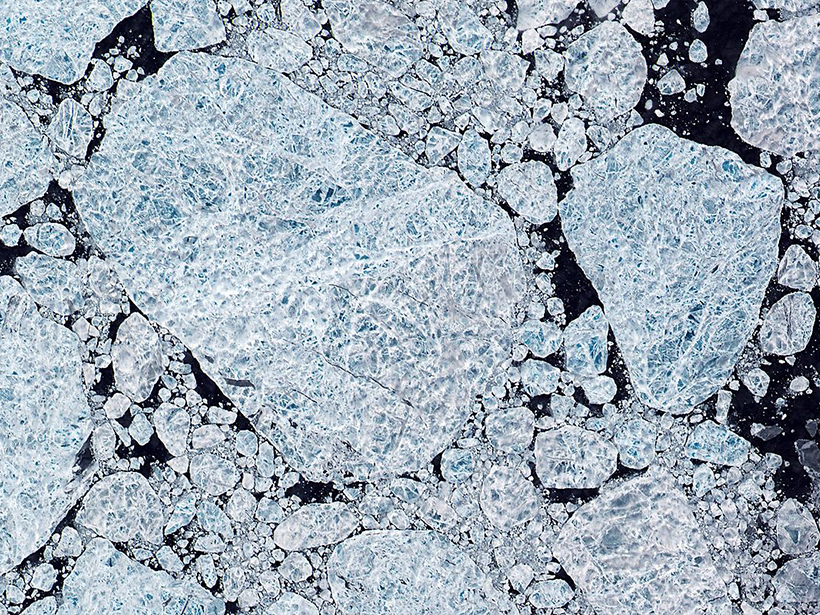As an Arctic heat wave pushed the mercury as much as 25°C above normal in late February 2018, a large polynya, a patch of open water surrounded by sea ice, opened in the Wandel Sea.
No polynyas had previously been observed in this ice-bound area north of Greenland, and it seemed likely that this anomaly would be linked to thinner sea ice. But when researchers Kent Moore and Axel Schweiger ran the numbers, they found that wasn’t the case.
In February 2018, a sudden stratospheric warming event occurred over Siberia. The west-to-east flow of the stratospheric polar vortex reversed, and cold air from the stratosphere plunged to Earth. This shift pushed Siberian air to Europe, bringing frigid temperatures in a weather system nicknamed the “Beast from the East.”
In turn, Europe’s warmer air was pushed toward Greenland, and winds surged across the island at speeds approaching hurricane force. Winds were so powerful they shifted enough ice to open an area of water roughly the size of Scotland.
“Sea ice is a slower climate system, and things occur on seasonal timescales. It is where the climate’s memory is.”
Using the University of Washington’s Pan-Arctic Ice Ocean Modeling and Assimilation System (PIOMAS), Moore and Schweiger simulated the wind conditions of 2018 with ice data from the past and found that even in years with thicker ice, the winds would have created a polynya. The research was published in Geophysical Research Letters in December 2018.
Although the polynya wasn’t caused by thin ice, that’s exactly what it appears to have left behind. Just 6 months later, a second polynya opened in the Wandel, and Moore and Schweiger are exploring whether it’s an effect of thinner ice stemming from a refreeze.
“Sea ice is a slower climate system, and things occur on seasonal timescales. It is where the climate’s memory is, and interactions with it are really interactions with the climate of the past,” says Moore, a professor of atmospheric physics at the University of Toronto Mississauga.
“When you perturb that memory, the effects are not immediate. If you looked only at the ice cover after the polynya, you wouldn’t see any difference. It was 100%. But if it is 100% at 1 meter thick, instead of 100% at 3 meters thick, that’s a big difference.”
Climate Change and Stratospheric Warming
Could thinner ice make the area more susceptible to future melting and lead to more open water in the Arctic? That pattern could contribute to a climate feedback loop that contributes to sudden stratospheric warmings.
“If you lose a bunch of sea ice, you’re basically creating a pattern in the waves in the troposphere that encourages a weaker stratospheric polar vortex,” says Amy Butler, a research scientist at the Cooperative Institute for Research in Environmental Sciences and the National Oceanic and Atmospheric Administration’s Earth System Research Laboratory.
These waves can be caused by surface level weather or convection and carry energy from the troposphere into the stratosphere. Strong winds in the stratospheric polar vortex are less likely to be affected by this energy transfer, but a weaker vortex is more likely to reverse its flow, causing sudden stratospheric warming to occur.
But that effect is far from a sure thing. Butler cautions that there are many factors at play, and it’s uncertain whether climate change will weaken or strengthen the vortex.
“The question is whether the influence of sea ice loss will be greater than other influences like upper tropical troposphere warming, which plays a big role in the opposite direction.”
—Ty Burke, Science Writer
Citation:
Burke, T. (2019), Strong winds leave Arctic regions on thin ice, Eos, 100, https://doi.org/10.1029/2019EO123183. Published on 09 May 2019.
Text © 2019. The authors. CC BY-NC-ND 3.0
Except where otherwise noted, images are subject to copyright. Any reuse without express permission from the copyright owner is prohibited.

